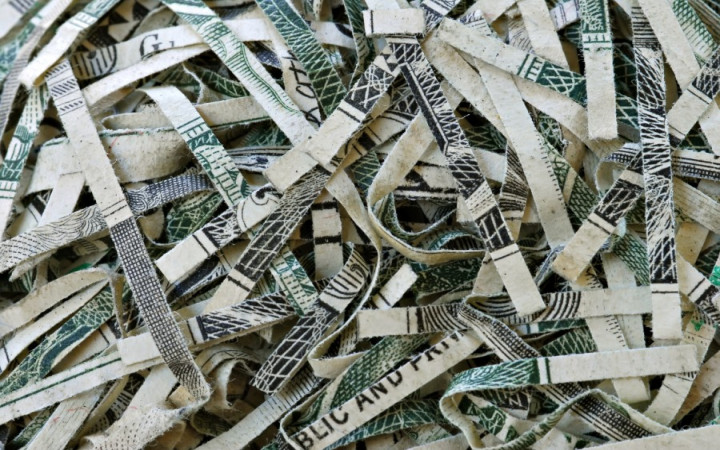Today’s Wonder of the Day was inspired by Queenbee . Queenbee Wonders, “Where does old money go?” Thanks for WONDERing with us, Queenbee !
Do you like paper money? Of course you do! Who doesn’t, right? Have you ever had the chance to see many different types of paper money?
There are bills of all sorts of denominations: ones, fives, tens, twenties, and hundreds. Have you ever been with a friend or family member to an automated teller machine (ATM)? If so, you may have seen some brand-new, crisp bills. You’ve probably also seen bills that are crinkled, soft and obviously quite old. They all spend the same. But what happens when a bill gets too old? Over time, they can become ripped and torn.
Bills are printed on linen-based paper that is high in quality. They are meant to wear well and be used for a long time. Over time and through repeated use by many people and machines, though, they will eventually break down and wear out. When bills get to the point where they tear easily, they may be recycled.
Brand-new, crisp bills enter the system through the United States Federal Reserve Banks. These banks send new bills to local banks, credit unions, and savings and loan institutions. Those places issue the new bills to customers who withdraw money.
As people begin to use bills, the wear and tear starts. Bills change hands from one person to another and from one business to another. They may spend days or weeks in wallets. Or they may change multiple hands in a single day. They also spend a lot of time going through various machines, from vending machines to automated bill counting and sorting machines.
Hundred dollar bills last the longest because they are not used as often as other bills. Fives and tens wear out the fastest because they’re used the most. On average, a one-dollar bill will last about 21 months in circulation.
When a bill gets too worn, a bank may request that old bills be replaced with new ones. Banks separate out bills that need to be replaced because they are dirty, torn or otherwise damaged. They give these bills to the Federal Reserve Bank for replacement.
The Federal Reserve Bank makes its own decision about the bills. If the bills need to be replaced, they will issue new, crisp bills to the bank that requested the replacement. The Federal Reserve Bank will then store the damaged bills for destruction.
When enough old bills have been collected, the Federal Reserve Banks will shred them. If you take a tour of a Federal Reserve Bank, you can sometimes take home your very own unique souvenir: a bag of shredded paper money!
The recycling process isn’t a small-scale operation. Tons of old paper bills are recycled every week. In addition to creating souvenirs for tourists, most of the recycled money is used to make new products, including stationery, pencils and even clothes!
What if you have a badly-damaged bill in your wallet? Just take it into your local bank and ask them to replace it. As long as you have at least half of the bill left, most banks will gladly exchange it for you.
Standards: C3.D2.Eco.9, CCRA.L.3, CCRA.L.6, CCRA.R.1, CCRA.R.2, CCRA.R.4, CCRA.R.10, CCRA.SL.1




